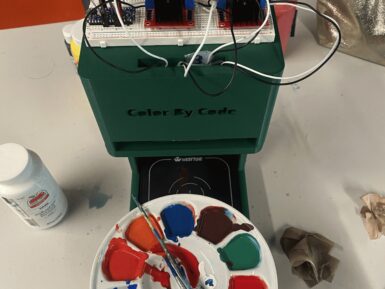
Overview
DFRobot Gravity: analog electrical conductivity meter V2 is specially used to measure the electrical conductivity of an aqueous solution, and then to evaluate the water quality, which is often used in water culture, aquaculture, environmental water detection, and other fields. You may also check Liquid Sensor Selection Guide to get better familiar with our liquid sensor series.
This ec meter product, as an upgraded version of the electrical conductivity meter V1, greatly improves the user experience and data precision. It supports 3~5v wide voltage input, and is compatible with 5V and 3.3V main control board; The output signal filtered by hardware has low jitters; The excitation source adopts AC signal, which effectively reduces the polarization effect, improves the precision, and prolongs the life of the probe; The software library uses two-point calibration method, and can automatically identify standard buffer solution, so simple and convenient.
With this product, the main control board (such as Arduino), and the software library, you can quickly build an electrical conductivity meter, plug, and play, no welding. DFRobot provides a variety of water quality sensor products, uniform size, and interface, not only meet the needs of various water quality testing but also suitable for the DIY of multi-parameter water quality tester.
Conductivity is the reciprocal of the resistance, which is related to the ability of the material to carry the current. In the liquid, the reciprocal of the resistance, the conductivity, is the measure of its ability to conduct electricity. Conductivity is an important parameter of water quality. It can reflect the extent of electrolytes present in water.
Tips:
In order to ensure measurement accuracy, it is strongly recommended to add a temperature sensor to measure the temperature and achieve automatic temperature compensation.
Features:
- 3.0~5.0V wide voltage input
- Hardware filtered output signal, low jitter
- AC excitation source, effectively reduce polarization
- Gravity connector and BNC connector, plug and play, no welding
- Software library supports two-point calibration and automatically identifies standard buffer solution, integrates temperature compensation algorithm
- Uniform size and connector, convenient for the design of mechanical structures
Applications:
- Water quality monitoring.
- Aquaculture.
- Hydroponic & Aquaponic
Get Inspired

Control the air/fuel mixture for a better fuel economy of a engine with a Arduino Nano.

When you want to paint the walls in your bedroom that very specific shade of Misty Irish Green, all you have to do is head to your local hardware store and have them scan the corresponding card. The paint-mixing machine will then add the pigment to a white base and, a few minutes later, you have that exact color. So, shouldn’t you be able to do the same thing with acrylic paint for hobby purposes? Now you can, thanks to the “Color By Code” machine designed by Caltech students Frida Moreno and Asmat Kaur Taunque. Moreno and Taunque built Color By Code for a class project and it is, essentially, a hobby version of those hardware store paint-mixers intended for acrylic paint. As is the standard across many industries that deal with pigments, paint, and printing, this works using CMYK (cyan, magenta, yellow, key) color mixing. Here, the key is black and the machine takes an input color value for each component, then dispenses the paint in those ratios to achieve the desired hue. That all happens under the control of an Arduino Nano Every board. That operates peristaltic pumps, via L298N motor drivers, that dispense each color. Afterwards, a flushing procedure clears the lines before the next mix. The pumps fit into a 3D-printed stand, with the hoses dropping below to a waiting container. At this time, the user must set the color values through serial commands. But the team hopes to create a Bluetooth app in the future. They also plan to add a weight sensor, which would improve the machine’s accuracy.








